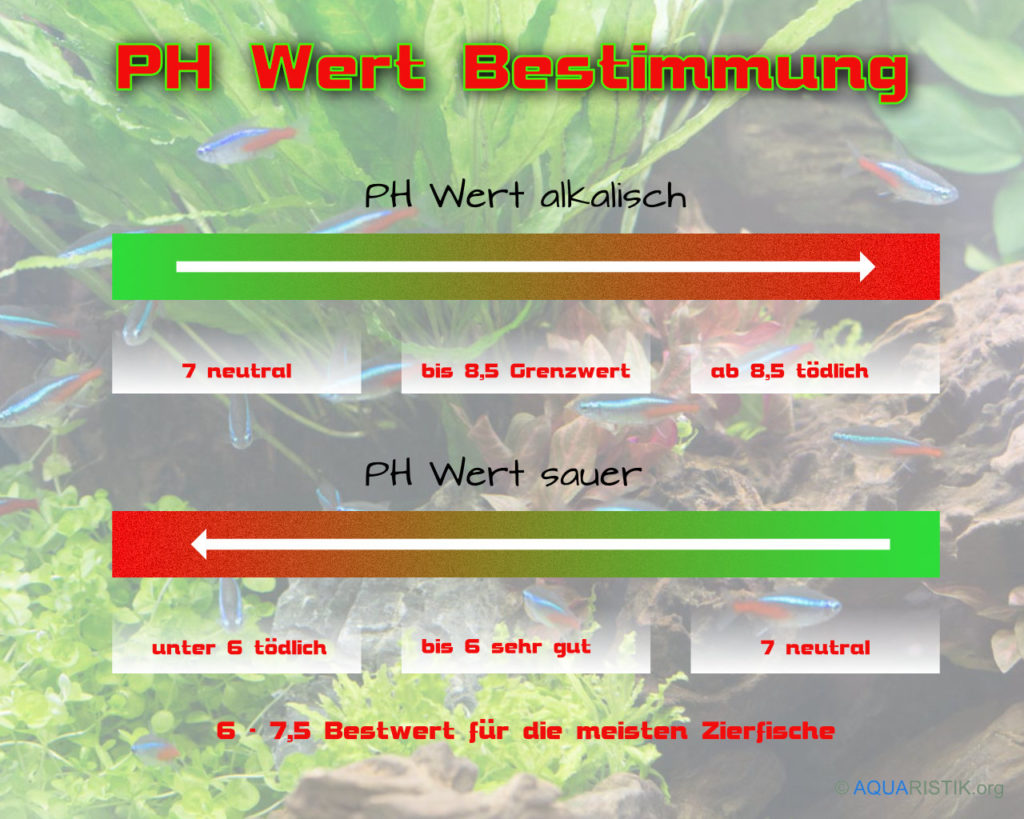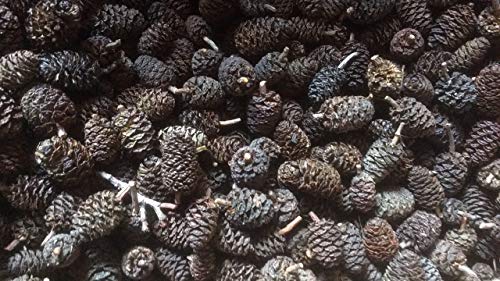Table of Contents

What is the PH value anyway?
Let's start with the explanation of what the PH value is. If you read about it in relevant works, you will find that the value was defined by a Danish chemist. The P stands for solution and pressure of the hydrogen ions and the letter H stands for hydrogen.
The higher the PH value, the lower the concentration of charged hydrogen ions in the water.
A pH below 7 is considered acidic. The pH value is usually called neutral and corresponds to absolutely pure water. Values above 7 represent alkaline solutions.
PH value below 7 = corresponds to acidic water
PH value equal to 7 = corresponds to neutral water
PH value above 7 = corresponds to alkaline water
Before we come to the measures how to lower the PH value, we want to briefly go into the connection to the KH value (carbonate hardness), because no PH value reduction without lowering the KH value.
If you do not lower the KH value, then a lowering of the PH value will not be possible. Therefore, we always recommend measuring and documenting both values accordingly. Basically, the following measures do not necessarily directly influence the PH value, but also lower the KH value. It loses its buffering effect and the pH value can drop. Basically it is about the introduction of acid, but more on that later.
Why should I lower the PH value?
This question will be clear to most readers, otherwise you wouldn't be here. Basically, it is about creating keeping conditions that occur in nature with the respective ornamental fish. These values can be quite different. Be it a fairly high alkaline pH value or a fairly acidic value. This depends entirely on the conditions of the respective waters.

What options are there to lower the pH?
Now let's look at the individual options. There are different forms that allow us to lower the pH value. Not all are equally successful and, above all, sustainable. Many are only for short-term reduction.
Method 1 with an osmosis system
Already in our Guide to the osmosis system, we went into its function and use. With such a system it is possible to blend water and thus influence the pH value. Unfortunately, this initially remains the same as the starting water, but the KH and GH value is significantly reduced and almost goes to zero. This in turn allows the pH value to drop. This is influenced by the CO² in the ambient air. Values below 7 can then level off here.
Here you should of course note that depending on the quality and effectiveness, waste water is produced. This can even take place up to a ratio of 1:4.
Method 2 with distilled water
Already in our Article on rainwater and distilled water we went into the lowering effect of the PH value. Distilled water also has a PH value of around 7. The KH value is also almost zero here. The pH value is then influenced again by the introduction of acid.
Method 3 with alder cones and leaves
Above all, one reads again and again about oak leaves and alder cones, which should influence the pH value accordingly. In our experience, however, you will only have little success here, especially if the starting water is in a range of 8. However, if you start with neutral water, you can get a slightly acidic effect.
| # | Preview | Products | Rating | Price | |
|---|---|---|---|---|---|
| 1 |  | Hobby 51115 Alder Cones, 50 Pieces (Pack of 1) | 4,79 EUR | View product | |
| 2 |  | sera alder cones (50 pieces) - alder cones to naturally lower the pH value | 9,59 EUR | View product | |
| 3 |  | Alder cones ~500 pieces (=200g), black alder, Alnus glutinosa, black alder cones from catappa-leaves | 14,90 EUR | View product |
Method 4 with a special substrate
Of course you can already at Setting up an aquarium Take measures that affect the pH value. Special substrates, which are usually mixed with peat, are used for this purpose. Examples could be Akadama or also solos.
Method 5 with special chemistry
Various manufacturers also offer certain chemical additives that are intended to lower the pH value. There are various manufacturers who allow this. Be it from JBL or from Tetra. But even with these remedies, you first have to lower the KH value accordingly, otherwise you can pour a lot of remedies into the aquarium and it won’t really do anything. The active ingredients here are mostly natural oak extract.
Method 6 through natural oak extract
As already mentioned above, there is also the possibility of influencing the pH value by adding oak extracts. These preparations are mostly made of sulphurous acid and therefore the reduction should be permanent.
Method 7 by using a deionizer
Anyone who owns a demineralizer will already be in the range around 7. This of course depends on the resin used. This is certainly a method which will be used less often.
[the_ad id = “1019 ″]Method 8 by using peat
Peat can also serve very well to lower the PH value. Various methods can be used for this. On the one hand, peat filtering is mentioned again and again. Here you are in its best external filter, certain peat granules, which you can get in specialist shops. This can be used to lower the PH value quite quickly and you have to be careful with it. You can also put peat directly into the aquarium in a stocking. This option is also often practiced. You should always pay close attention to the values when using peat, because it could also happen that the value drops too quickly.
Method 9 by introducing CO2
As mentioned above, the dissolved Co2 also influences the pH value. For this purpose, however, the KH value, i.e. the buffer, must also be reduced accordingly. If this is the case, the introduction of the fertilizer Co² can also lower the pH value. However, if you only want to reduce the h value, you do not have to buy an expensive Co2 system. More info about the Co² systems are available here.
What other ideas do you have for influencing the pH value?






